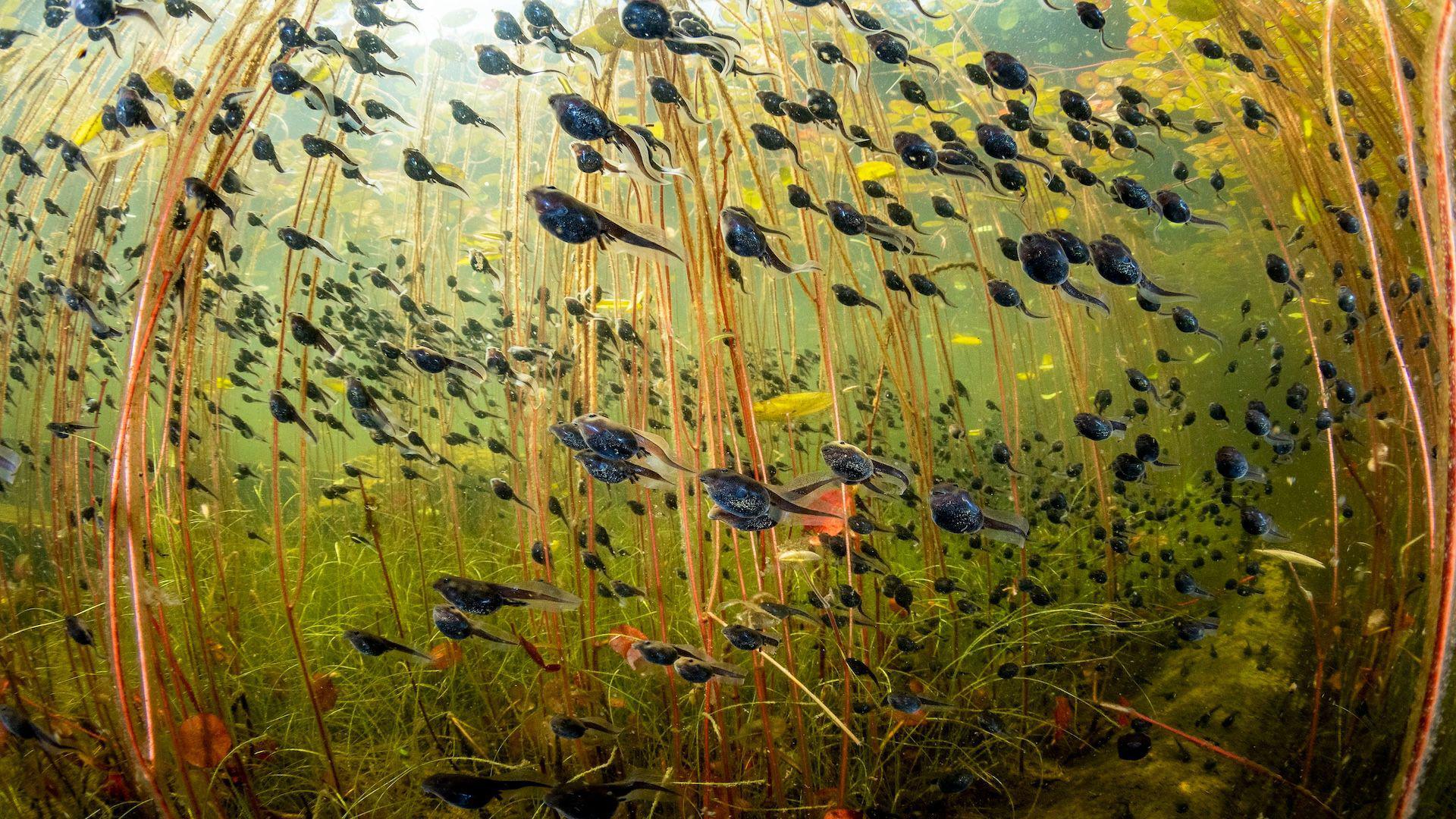Wildlife Photographer of the Year 2025 – the best pictures so far
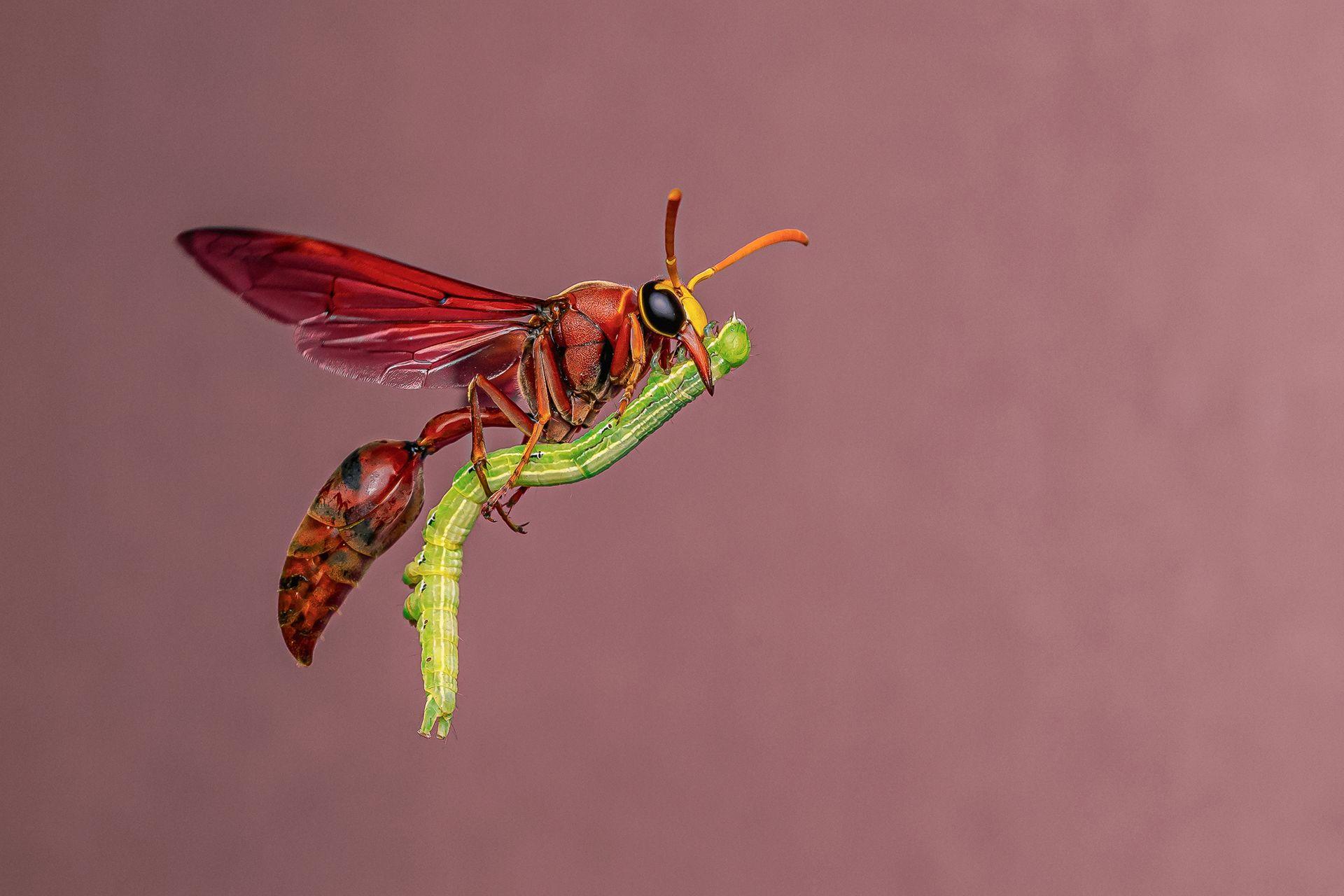
This image titled "Special Delivery" was highly commended in the Behaviour: Invertebrates category.
- Published
At first glance, the potter wasp appears to be riding a broomstick.
But this industrious insect isn't flying back to stir its witch's cauldron, or playing Quidditch. It's carrying a caterpillar – prey to feed its young.
It was captured by macro wildlife photographer Bidyut Kalita and was among the runner-up or 'highly commended' entries in this year's Wildlife Photographer of the Year competition.
The winning images will be announced on 14 October, followed by an exhibition at the Natural History Museum, external, showcasing 100 standout photographs from around the world.
Scroll down to explore other highly commended works from the competition.
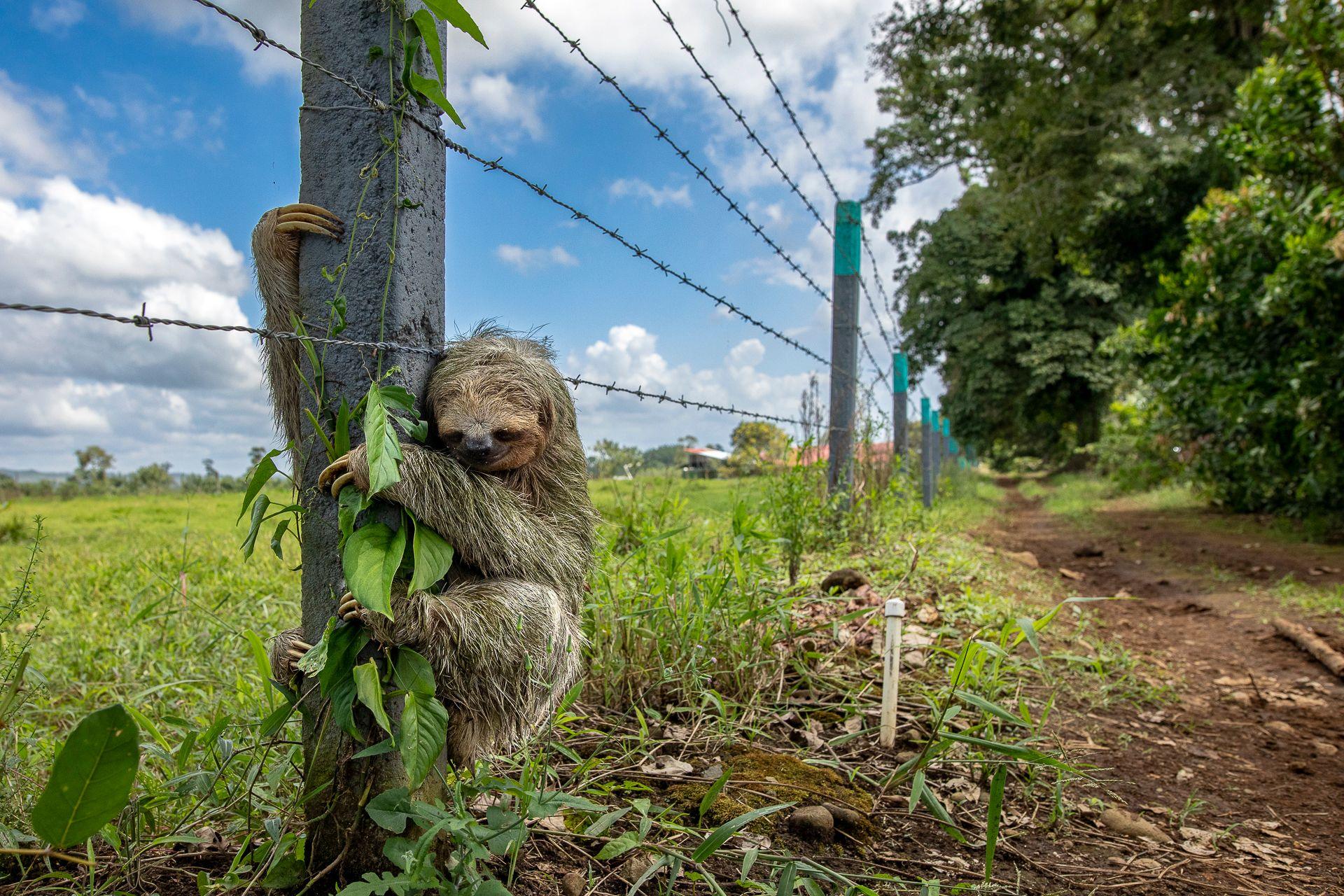
Title: No Place Like Home
Photographer: Emmanuel Tardy (France)
Location: El Tanque, San Carlos, Alajuela, Costa Rica
Mr Tardy captured a brown‑throated three‑toed sloth clinging to a barbed wire post after crossing a road.
As their habitats become fragmented due to tree loss, sloths are forced to make more ground crossings to reach the next tree, leaving them vulnerable.
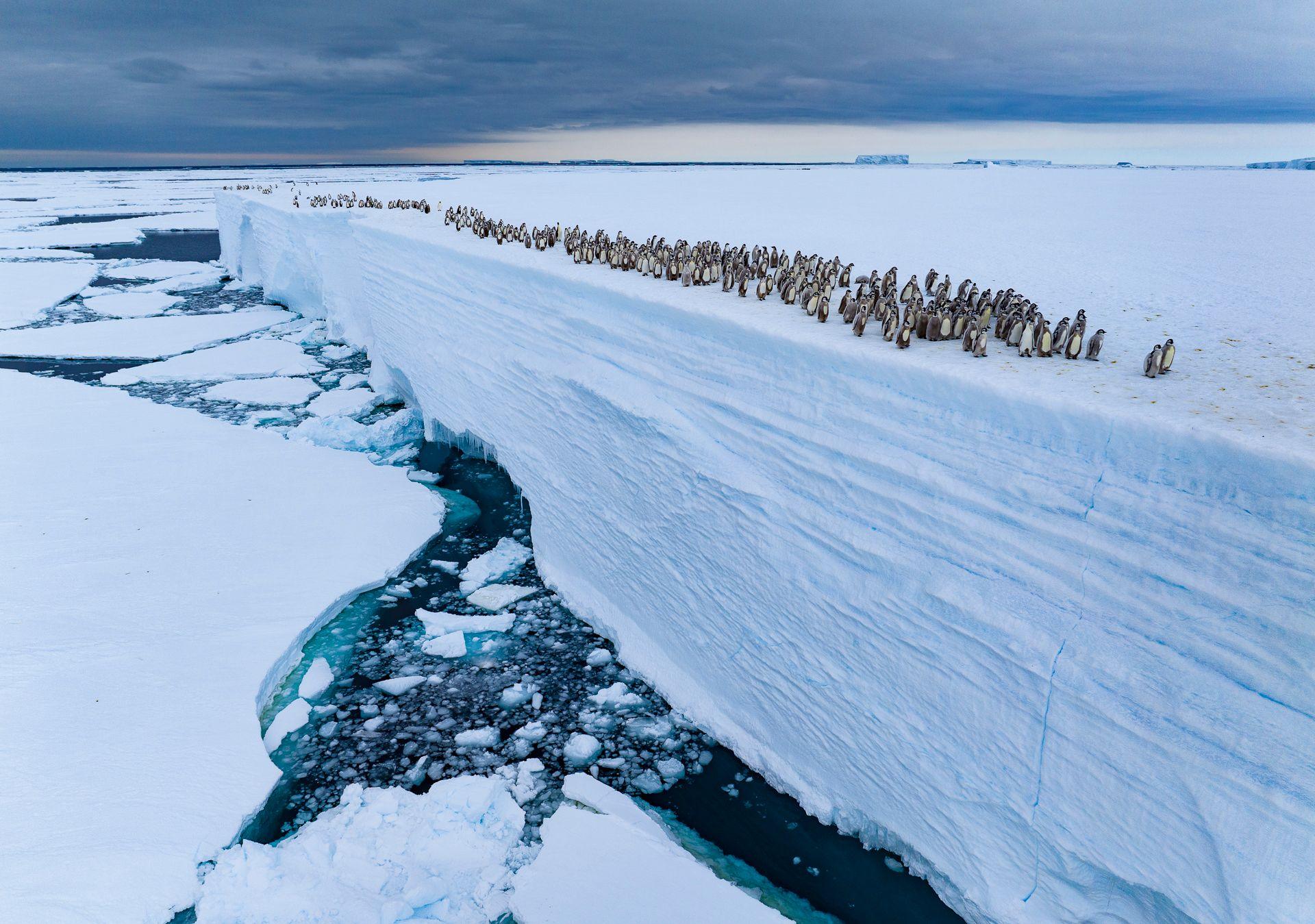
Title: Ice Edge Journey
Photographer: Bertie Gregory (UK)
Location: Ekström Ice Shelf, Atka Bay, Antarctica
Mr Gregory captured a group of fledgling emperor penguin chicks teetering on the edge of an ice shelf.
After spending two months observing the colony, he saw most chicks using natural ice ramps to descend safely to the sea – but this group had missed the easier route down.
Left to fend for themselves, emperor penguin chicks must eventually take a leap into the icy ocean for their first attempt at feeding.
Scientists believe that the decline in sea ice may force penguins to breed on ice shelves, making leaps like this a more common thing.
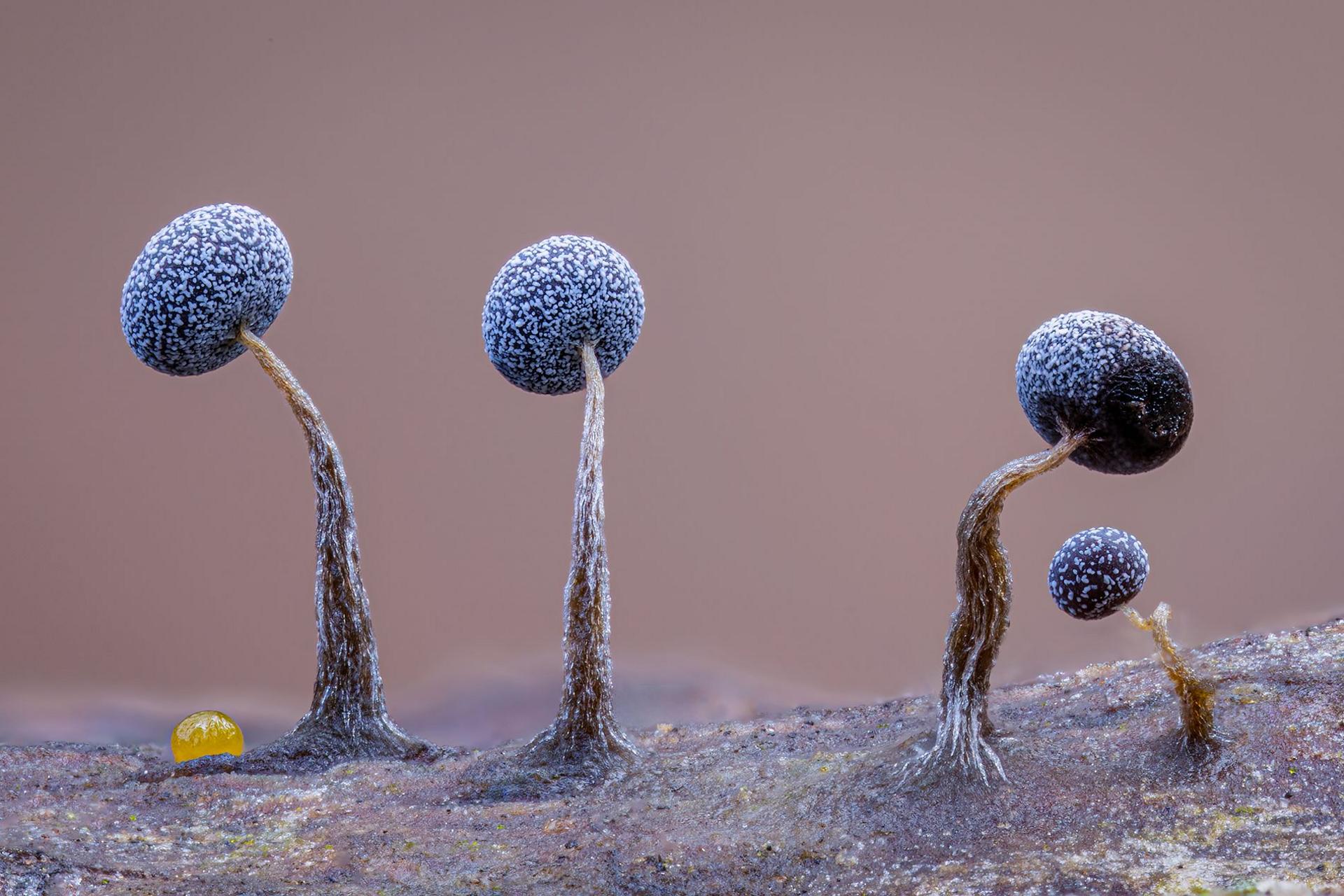
Title: Slime Family Portrait
Photographer: Kutub Uddin (Bangladesh/UK)
Location: Slindon Wood, West Sussex, England, UK
Mr Uddin discovered a grouping of slime moulds arranged on a fallen log in a forest. He described the scene as a "bizarre family portrait," complete with a tiny yellow insect egg.
A slime mould consists of mobile, single-celled, amoeba-like organisms that live independently but can come together to function as a single entity in order to find food and reproduce.
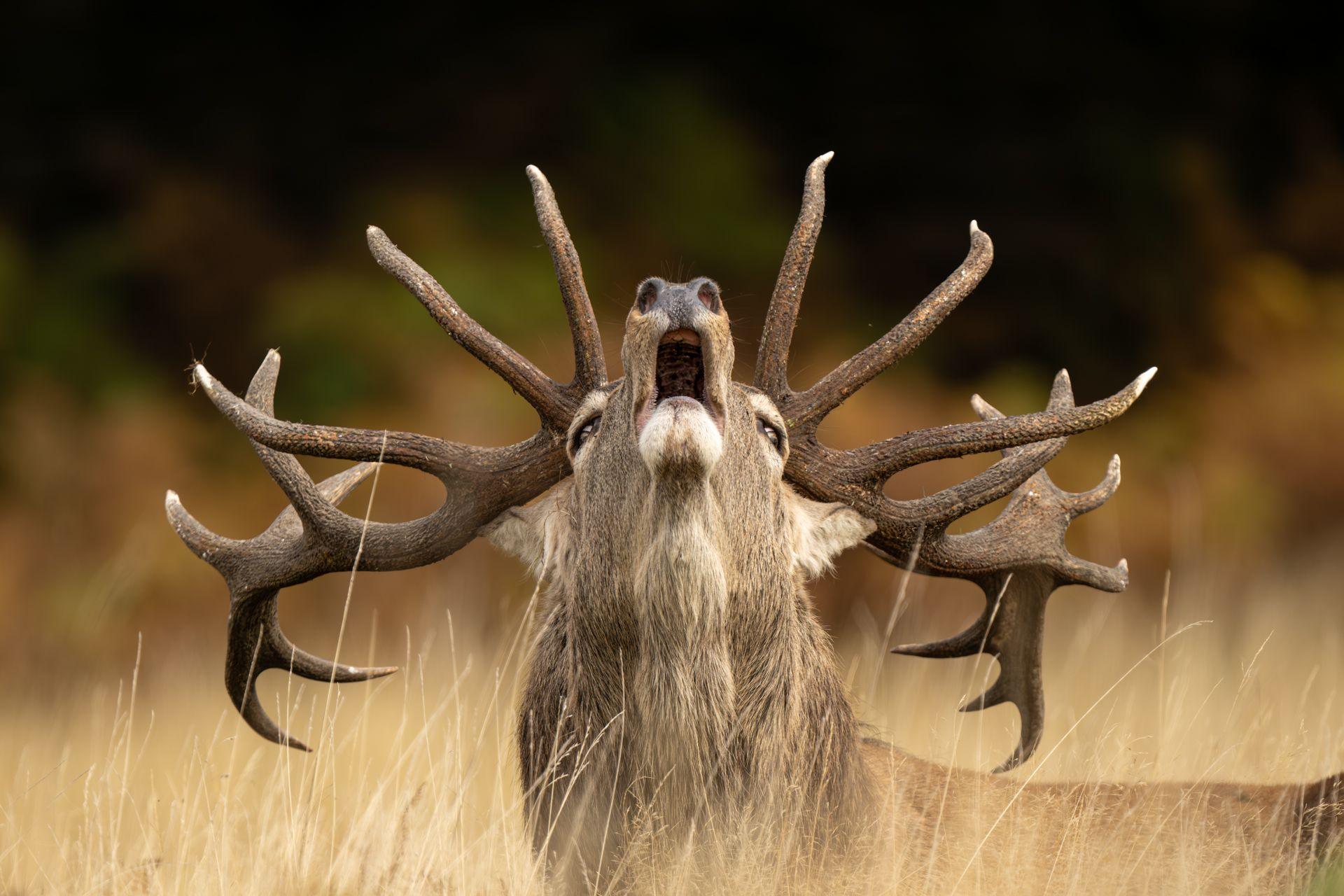
Title: Rutting Call
Photographer: Jamie Smart (UK)
Location: Bradgate Park, Leicestershire, UK
A red deer stag bellows during the autumn rut at Bradgate Park, as captured by Miss Smart from a safe distance.
She avoided long grass by stretching upwards to keep the view clear.
The stag's antlers, now fully hardened and velvet‑free, regrow each spring, becoming more impressive with each year as new points called tines develop.
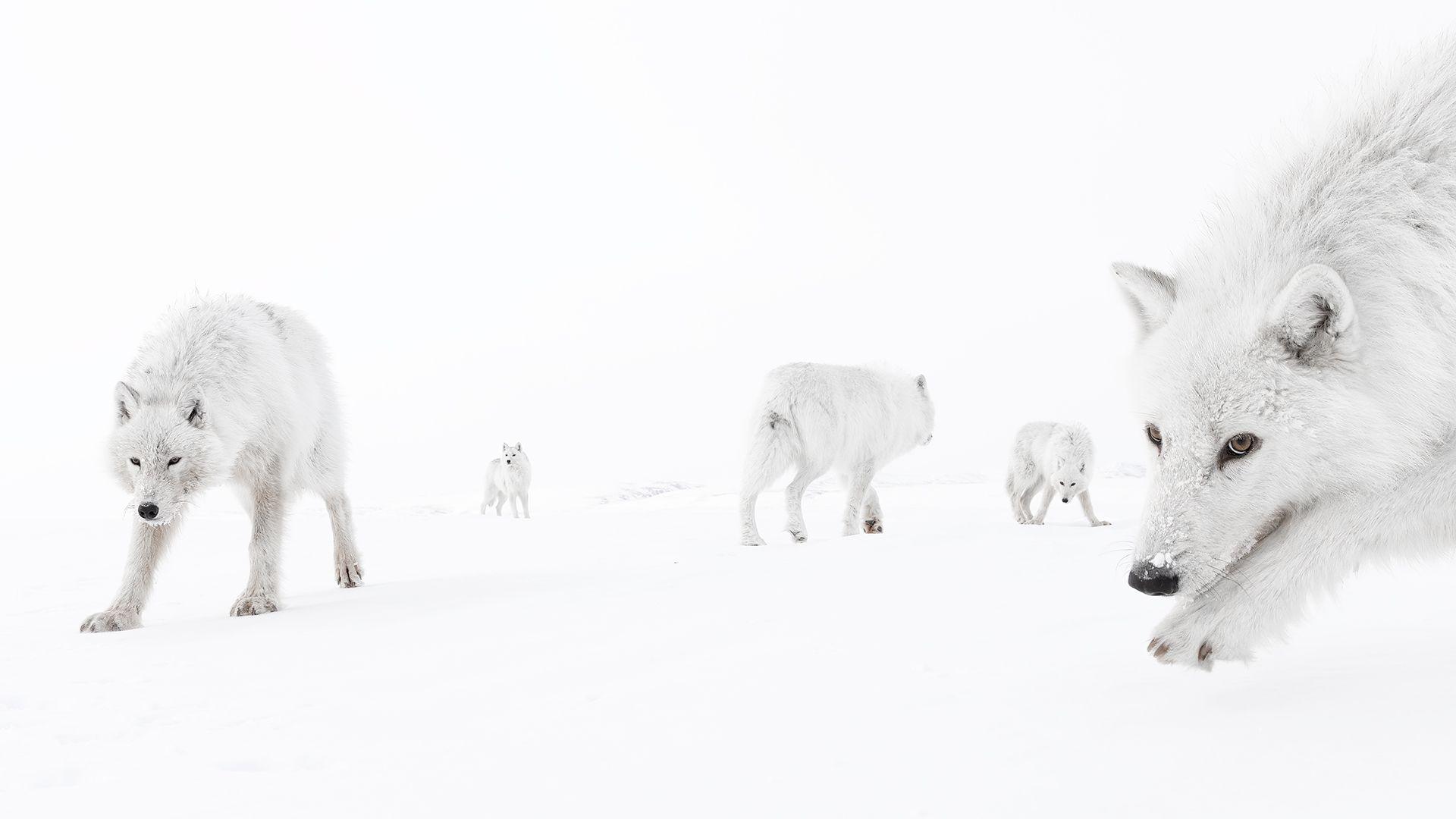
Title: Inside the Pack
Photographer: Amit Eshel (Israel)
Location: Ellesmere Island, Nunavut, Canada
Eye‑level with an inquisitive Arctic wolf pack in −35 C, Mr Eshel fulfilled his dream to photograph these elusive creatures.
The wolves came so close he could smell their breath.
Arctic wolves, found only in Canada's north and northern Greenland, are curious of humans due to minimal exposure.
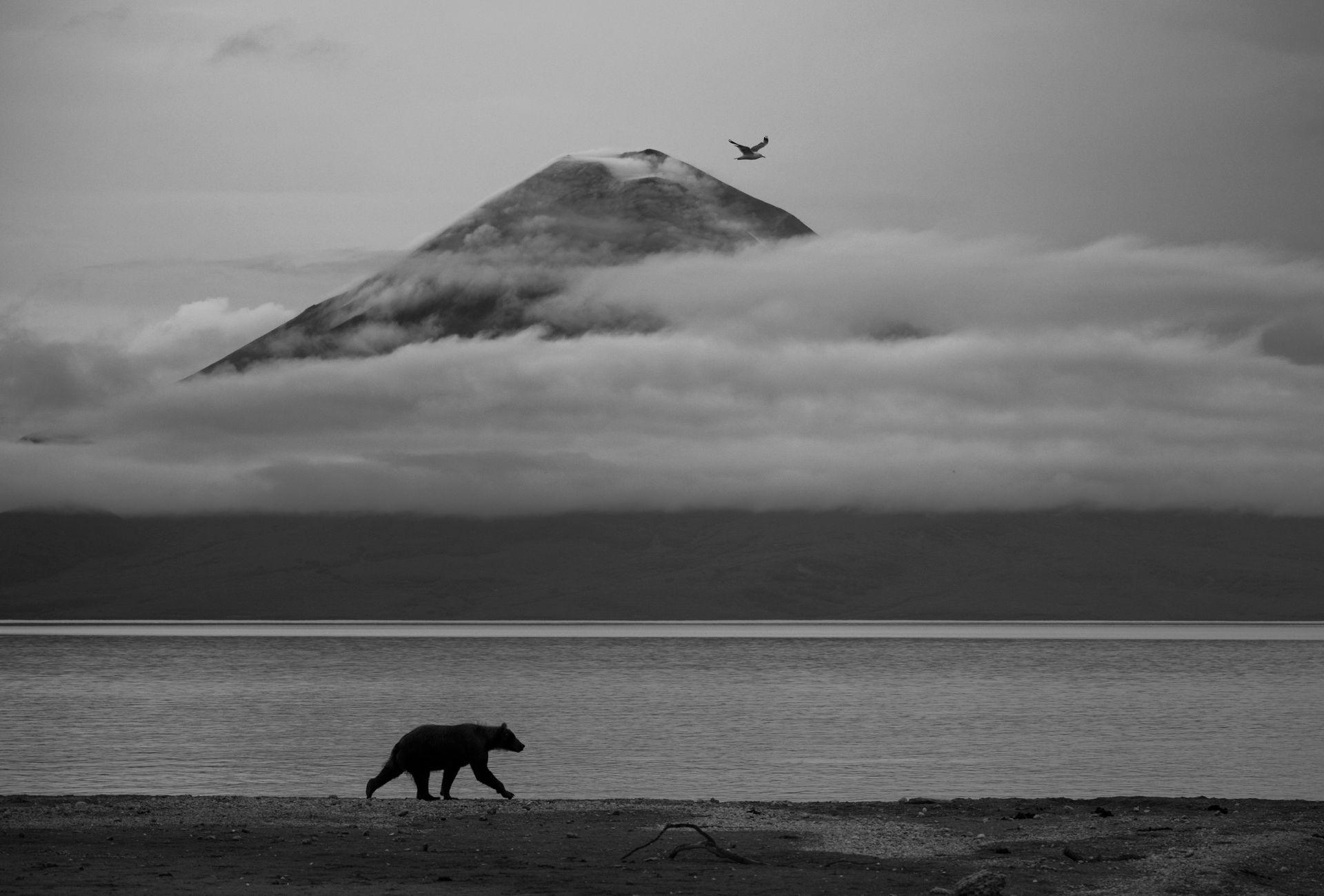
Title: Essence of Kamchatka
Photographer: Kesshav Vikram (India)
Location: Kurile Lake, Kamchatka Krai, Russia
After days of patience, Mr Vikram captured a brown bear walking along the shores of Kurile Lake, with Iliinsky volcano looming through cloud.
Whilst bears are generally solitary, this one was heading to feast with others on the glut of sockeye salmon migrating upriver from the Pacific to their origin lake to spawn.
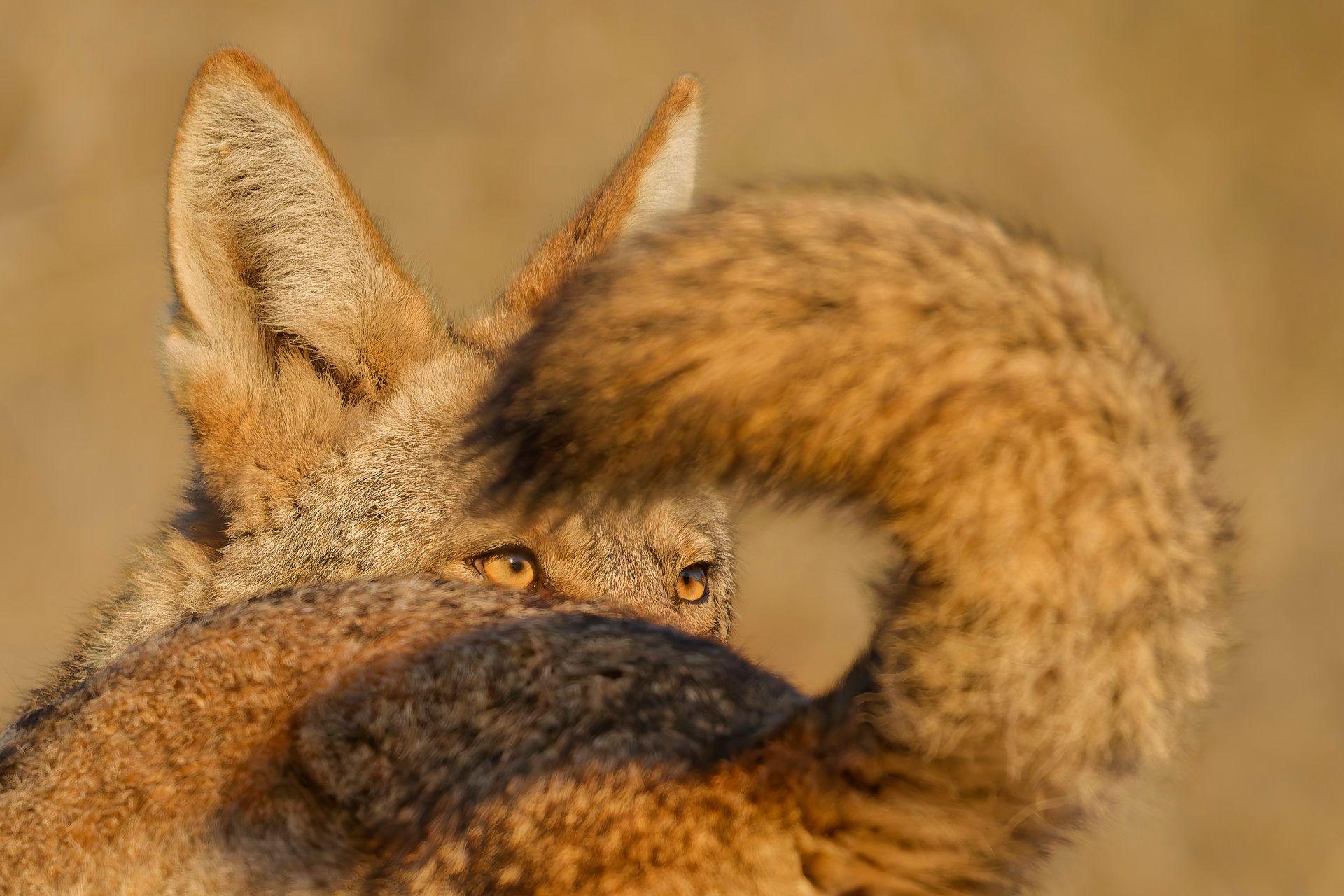
Title: A Tale of Two Coyotes
Photographer: Parham Pourahmad (USA)
Location: Bernal Heights Park, San Francisco, California, USA
Catching the morning light, Mr Pourahmad framed a male coyote's amber eye within the curve of a female's black‑tipped tail.
He followed this pair across rocky hillside for a couple of hours and took his shot when the male paused to nuzzle the female.
Coyotes are highly adaptable and are beginning to re‑establish themselves in San Francisco, where they had once disappeared from.
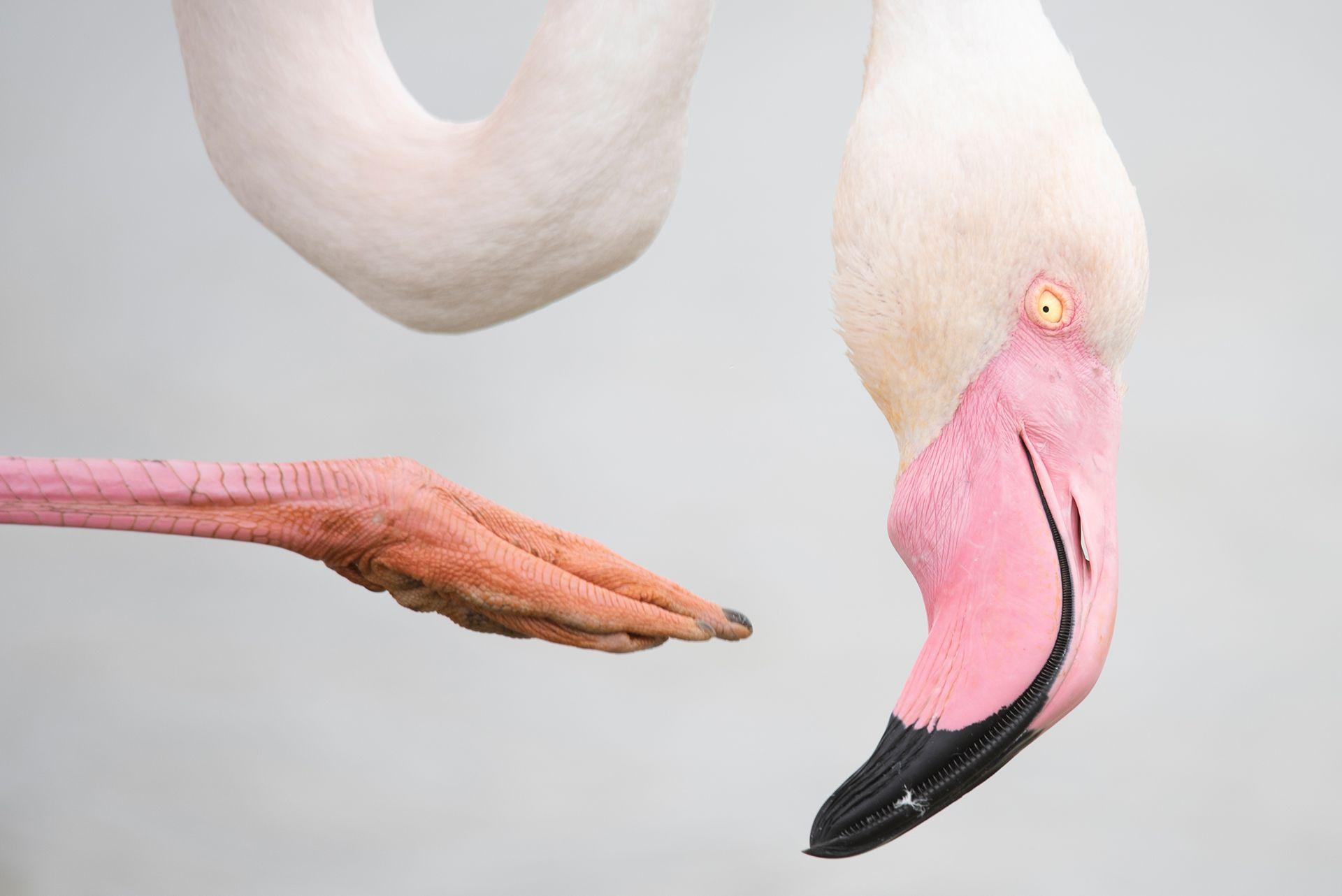
Title: Pink Pose
Photographer: Leana Kuster (Switzerland)
Location: Pont de Gau, Camargue, France
Leana Kuster shows a greater flamingo in the act of scratching its head with one of its unmistakably long legs.
While on holiday she was fascinated by their foraging behaviour as they moved gracefully through the shallow, saline wetlands, filter-feeding for molluscs and crustaceans.
Flamingos use their tongues to pump water through their uniquely adapted bills, which are lined with rows of fine, comblike plates.
The greater flamingo's pink colouring comes from a diet high in carotenoids - pigments found in algae and invertebrates such as shrimp.
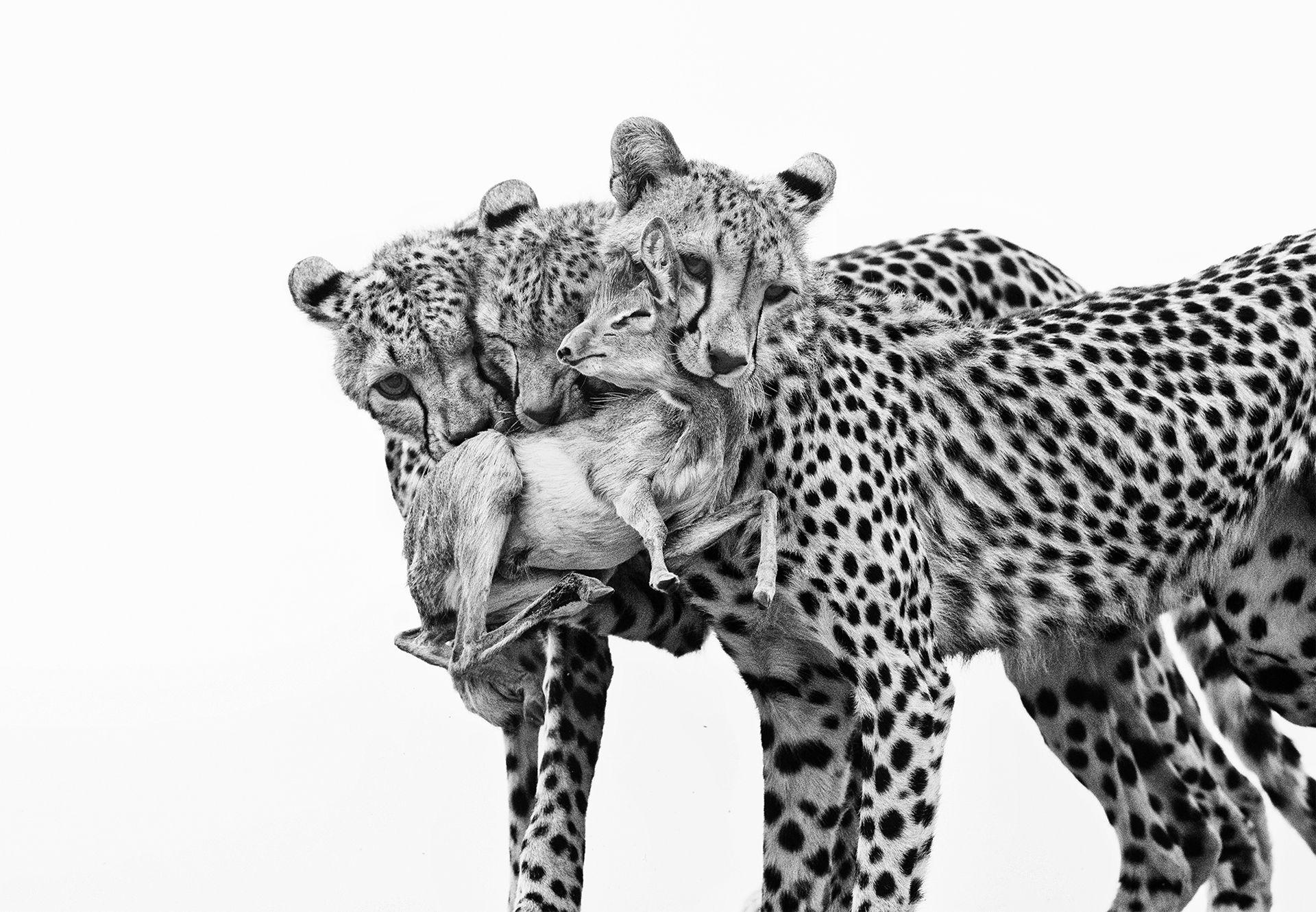
Title: Deadly Lessons
Photographer: Marina Cano (Spain)
Location: Samburu National Park, Samburu County, Kenya
In Kenya's Samburu National Park, Marina Cano witnessed young cheetahs practising a hunt on a Günther's dik‑dik, with their mother watching close by.
Cheetah cubs stay hidden for two months and only join hunts at about a year old to learn stalking and killing skills.
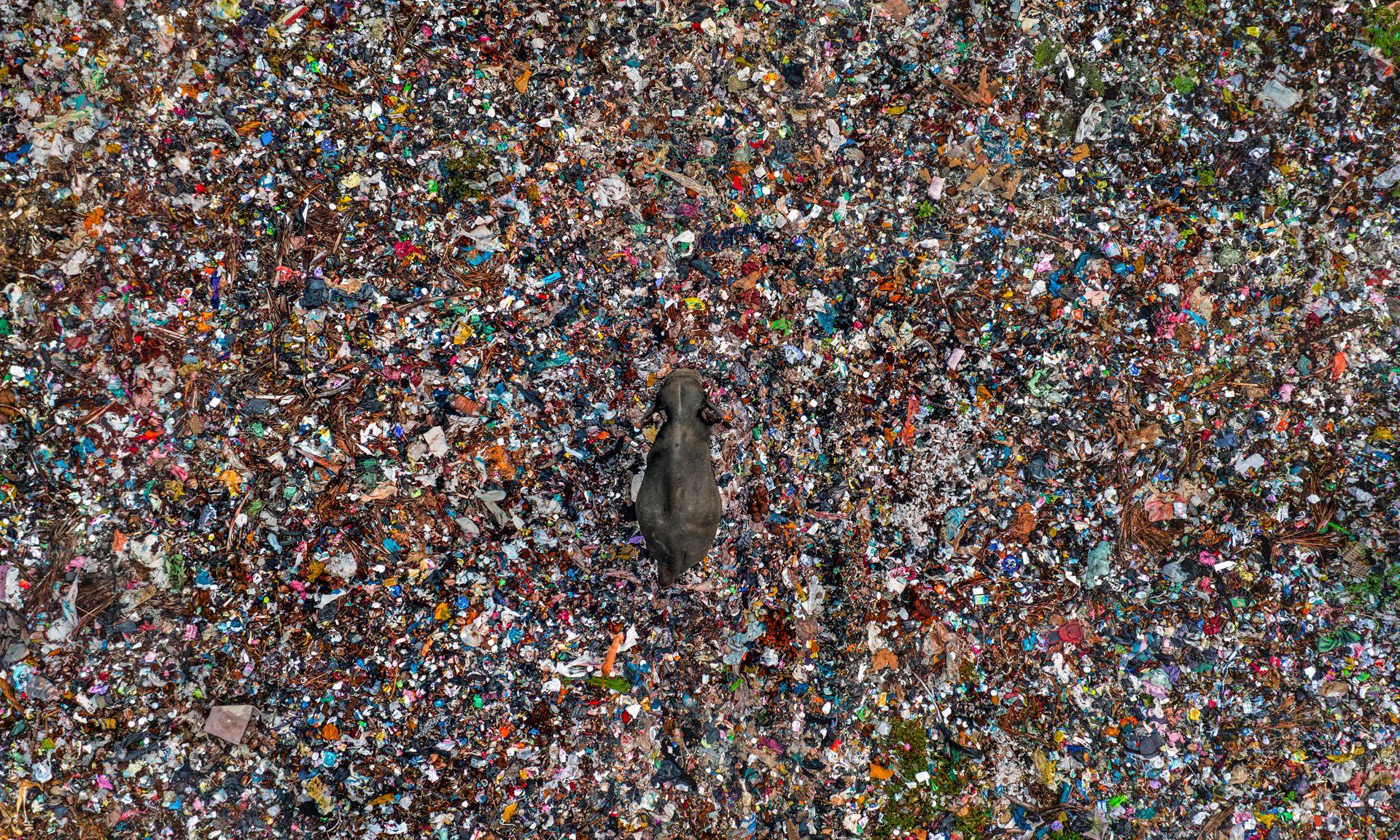
Title: Toxic Tip
Photographer: Lakshitha Karunarathna (Sri Lanka)
Location: Ampara, Eastern Province, Sri Lanka
In Sri Lanka, Lakshitha Karunarathna documented a lone Asian elephant navigating a waste disposal site.
Over the past three years, he has been recording the impacts of humans on elephants in the region.
The landfill site in Ampara was created more than a decade ago near a protected wildlife zone that is home to about 300 elephants. Along with food scraps, they consume plastic, which slowly kills them, officials say.
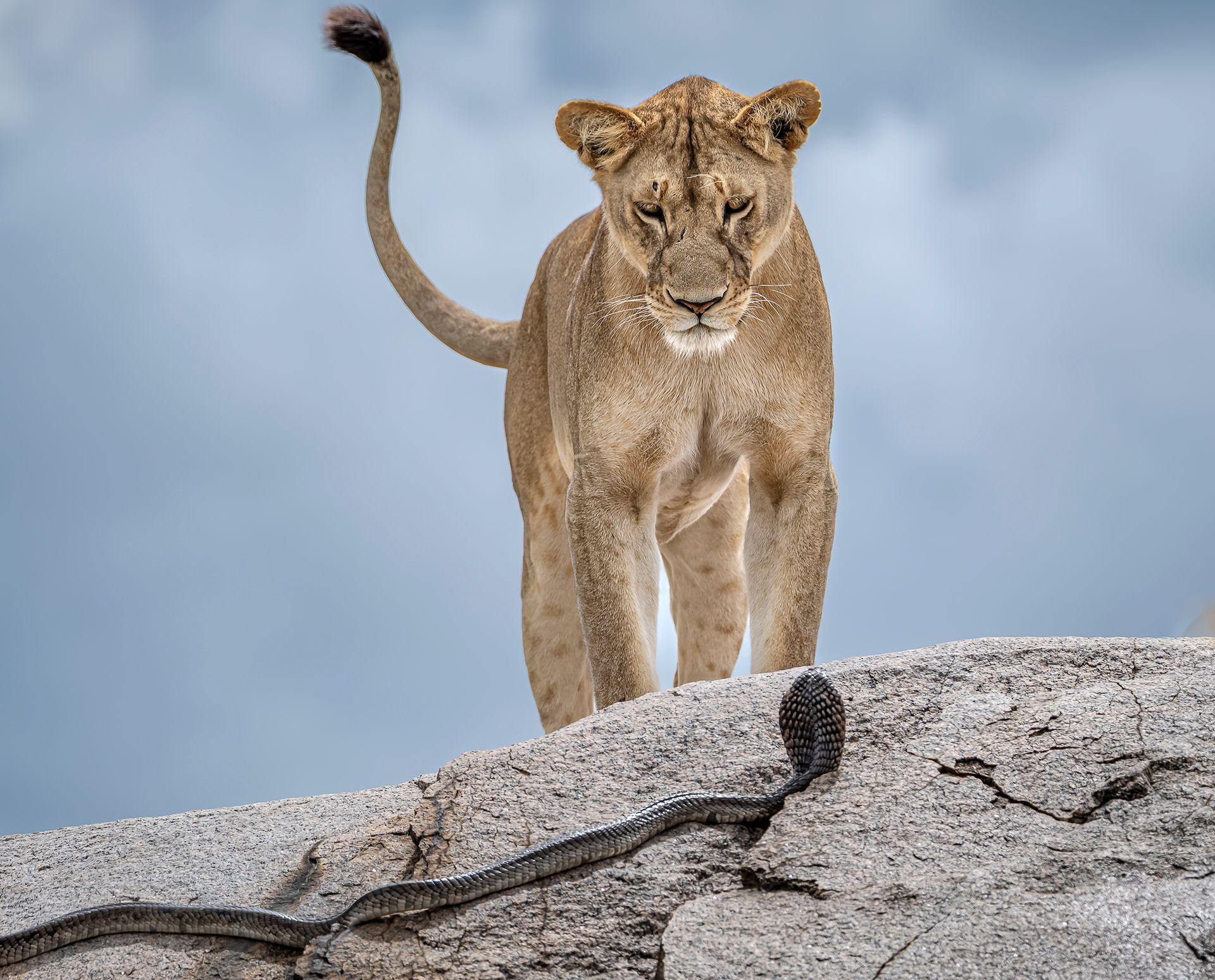
Title: Wake-up Call
Photographer: Gabriella Comi (Italy)
Location: Serengeti National Park, Tanzania
Gabriella Comi and her guide David spotted a cobra moving towards two napping lions in the Serengeti National Park in the scorching midday sun.
The eldest lion lifted its head to face the slithering threat.
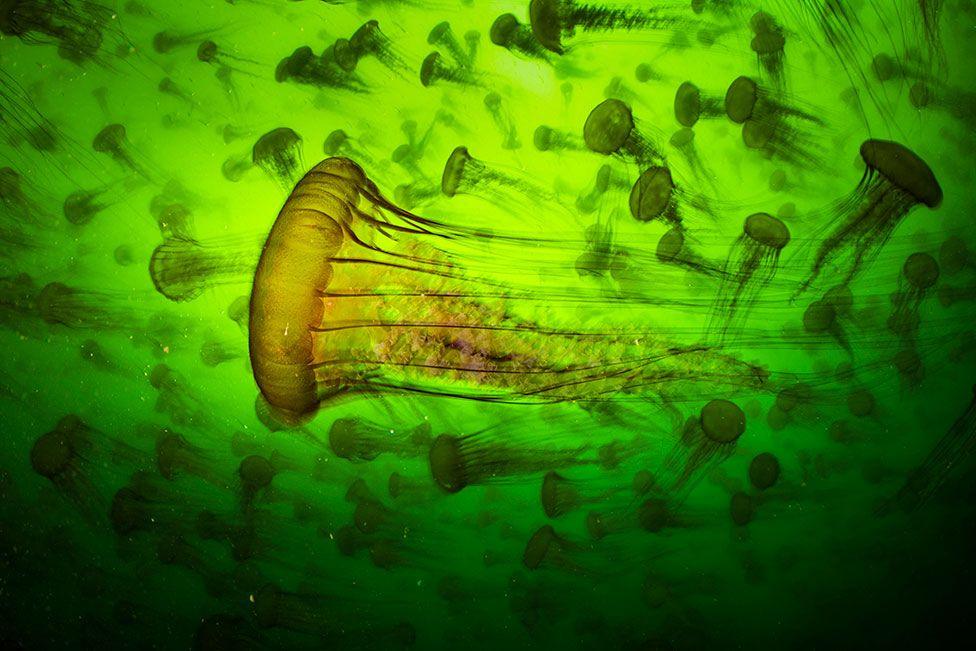
Title: Jelly Smack Summer
Photographer: Ralph Pace (USA)
Location: Monterey Bay, Monterey, California, USA
In the midst of a mass – or "smack" – of Pacific sea nettles, Mr Pace coated any skin not covered by his wetsuit with petroleum jelly to protect himself from stings.
The trailing tentacles can deliver a painful sting, which Mr Pace says feels more like that of a bee than a nettle.
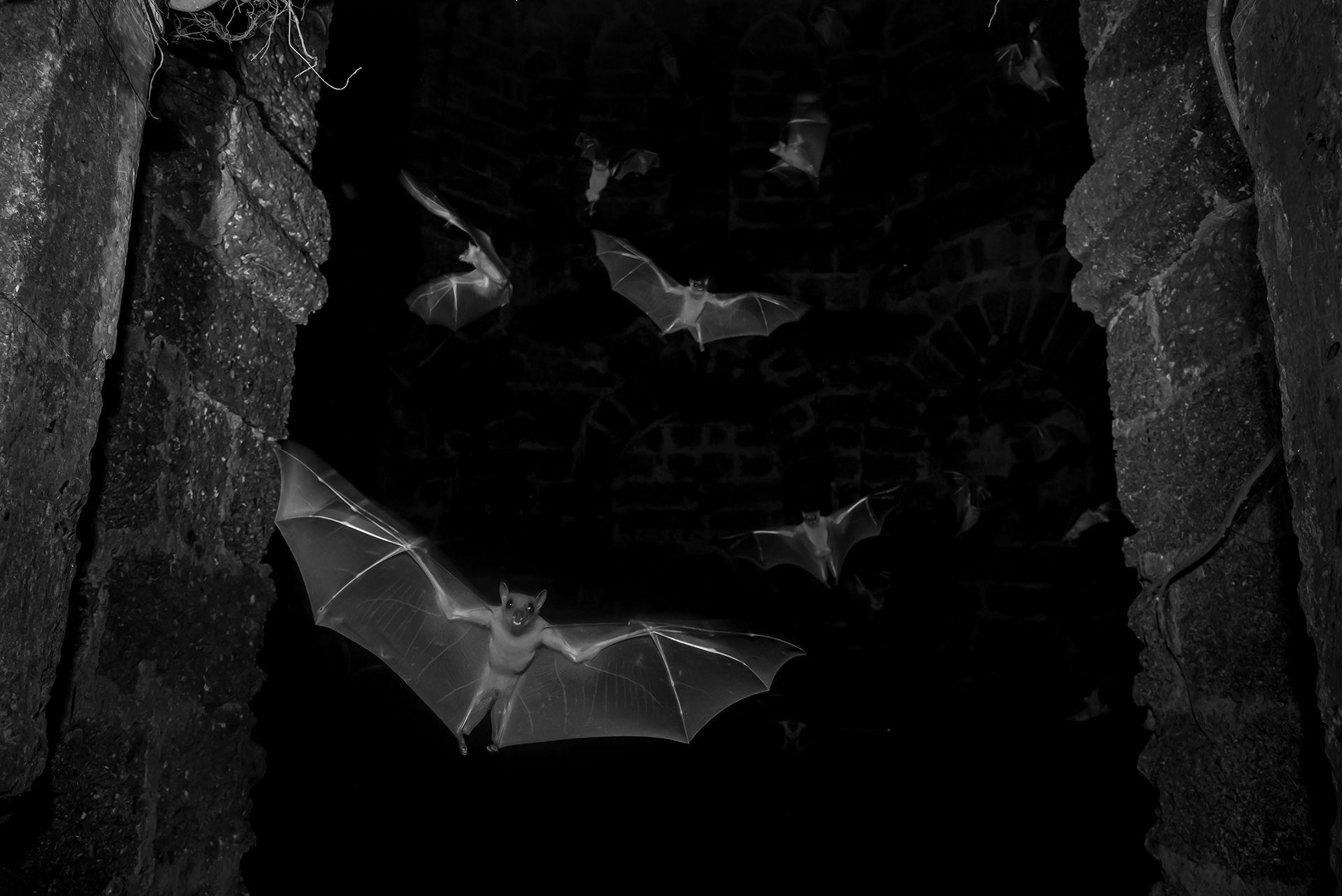
Title: Nature Reclaims Its Space
Photographer: Sitaram Raul (India)
Location: Banda, Maharashtra, India
In total darkness, Mr Raul stood amid fruit bats emerging from a historical ruin, using focus and flash to capture the moment. Bats swooped overhead while "randomly pooping" on him and his camera.
In southern Asia, old world fruit bats often roost in abandoned buildings.
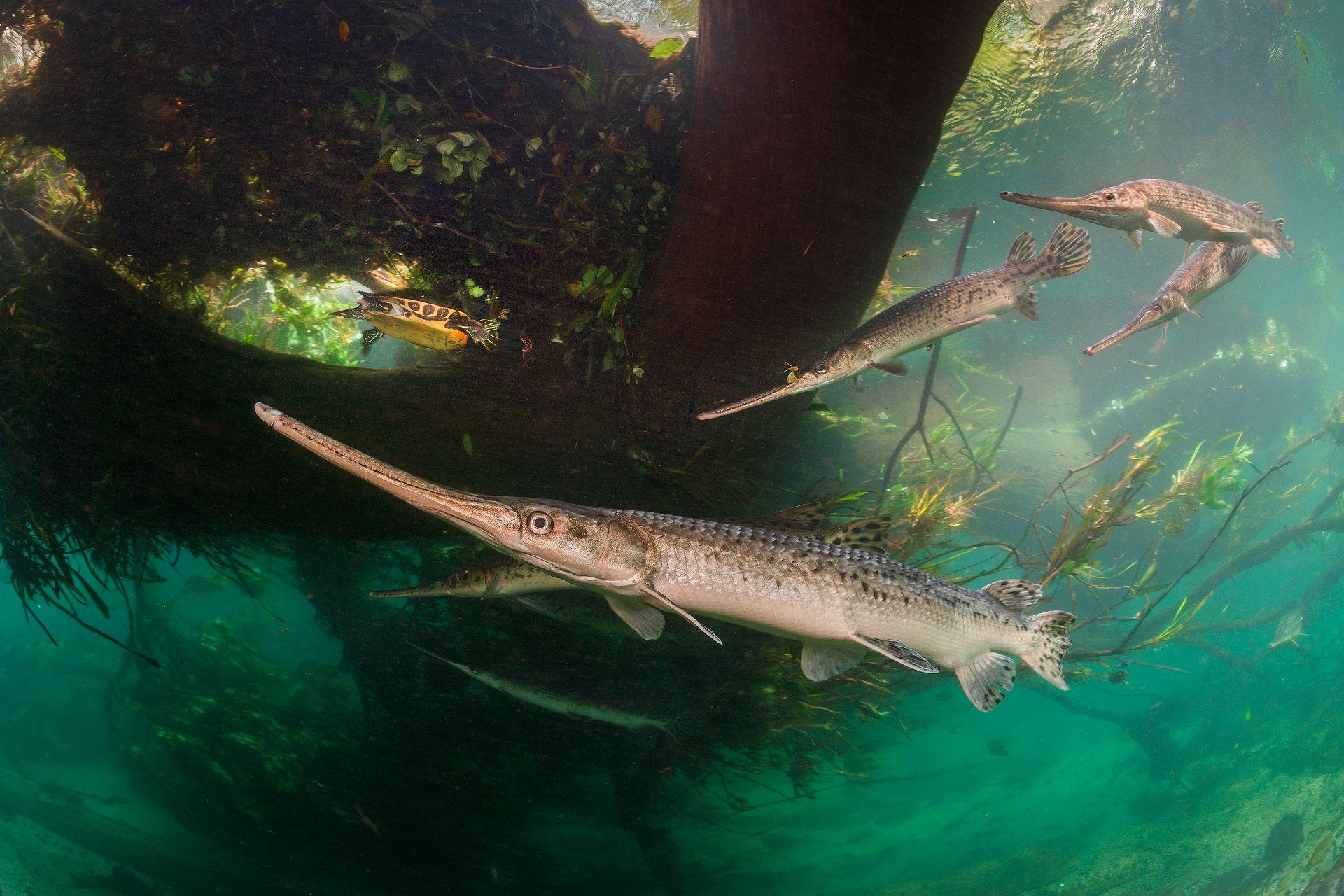
Title: Fragile River of Life
Photographer: Isaac Szabo (USA)
Location: Columbia County, Florida, USA
Wading in a crystal clear Florida river, Mr Szabo photographed a female longnose gar alongside several males during the mating season. A turtle drifting into the scene was the "icing on the cake", according to Mr Szabo.
This river is one of over 1,000 waterways fed by freshwater springs, known for their exceptional clarity. Protecting the aquifers that sustain these springs is essential, not only for iconic wildlife like manatees, but also for supplying drinking water to nearly half of Florida's population.
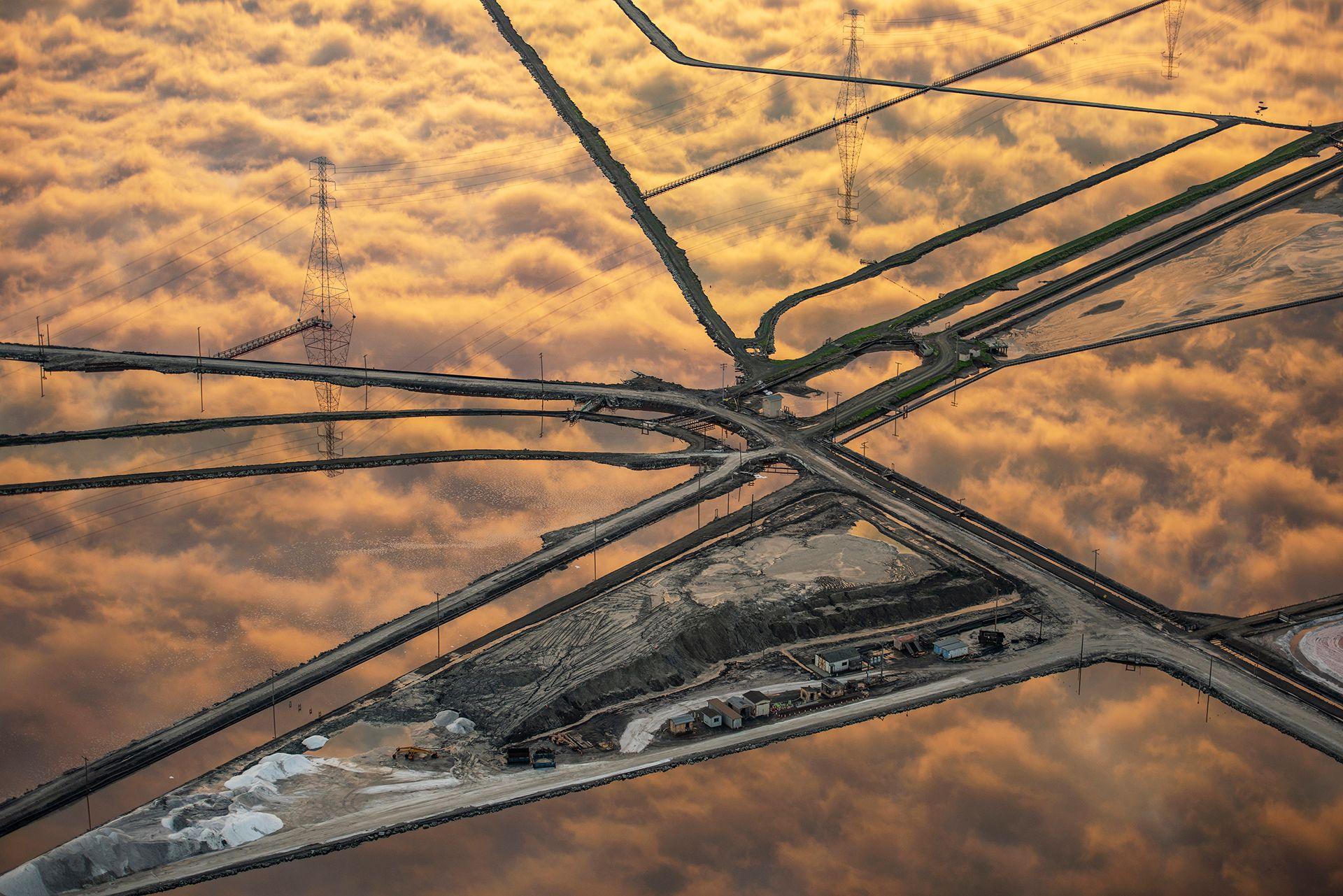
Title: Clouds of Gold
Photographer: Jassen Todorov (USA)
Location: San Francisco Bay, California, USA
Mr Todorov captured clouds reflected in vast salt ponds while flying into San Francisco.
The ponds, which cover nearly 5,000 hectares, display constantly changing colours -a view he says he never tires of.
The process of salt collection in San Francisco Bay was industrialised in the 1800s but now the bay's salt ponds are part of a major restoration project, bringing back tidal marshes and wildlife.
- Published9 October 2024
